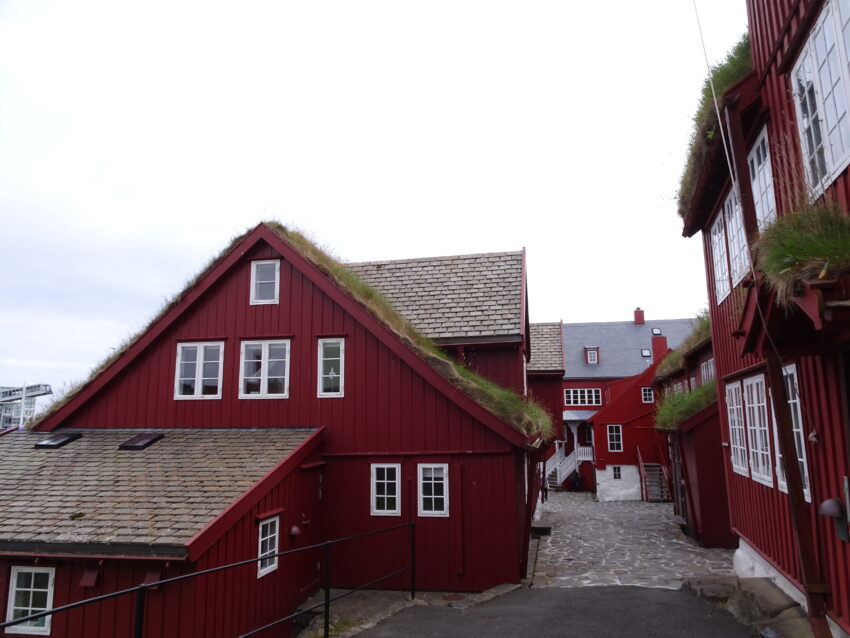To be honest, we didn’t really know what to expect of Tórshavn, so we were all the more delighted when we realized what a wonderfully quaint place it is. In fact, the cute houses and tiny alleyways of Tórshavn’s old town feel very removed from the dramatic, rugged landscapes of the rest of the Islands, even though the mountains start rising right outside the city limits.
Another thing we were surprised about was how much there’s actually to see – after all, with only about 20,000 inhabitants, it’s one of the smallest capitals in the world. Yet, there are plenty of cultural, historic and architectural sights to keep you occupied for a while.

If your time on the islands is limited, or if you’re itching to get out into the wilderness, you still might want to stick to a single day of exploring. Here are a few of the things you shouldn’t skip when visiting Tórshavn.
This post may contain affiliate links, and I might earn a small commission at no additional cost to you. For more info, click here.
What to See and Do in Tórshavn in a Day
Fitting a visit to all of Tórshavn’s important sights in a single day is tough, but my suggested itinerary starts with the places that have opening times and ends with areas that you can visit around the clock, so you can take your time.
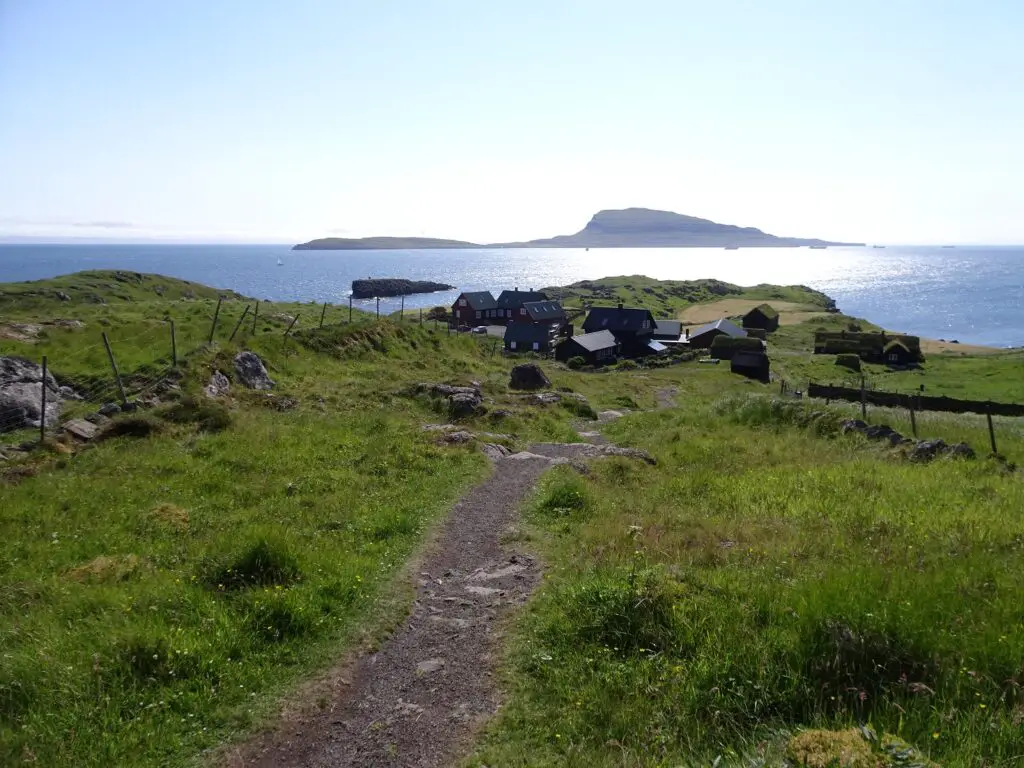
Also, if you travel in the summer you’ll have 18 hours or more of sunlight, which allows for longer days of exploring. After getting some breakfast, I suggest you hop on a bus bound for the northern suburb of Hoyvík to start your explorations at the National Museum as soon as it opens.
Tjóðsavnið (Faroe Islands National Museum)
I love to visit National Museums at the beginning of my trips, as they usually give a wonderful overview to what the country or region has to offer. The Faroe Islands’ National Museum is no exception and serves as the perfect introduction to the nature, geology, archaeology, history and culture of the Archipelago.
As an archaeologist, I was particularly intrigued by the Viking Age and early medieval artefacts from Leirvík, Sandur and Kirkjubøur, including the original 12th-century carved wooden pew-ends from Saint Olav’s church in Kirkjubøur.
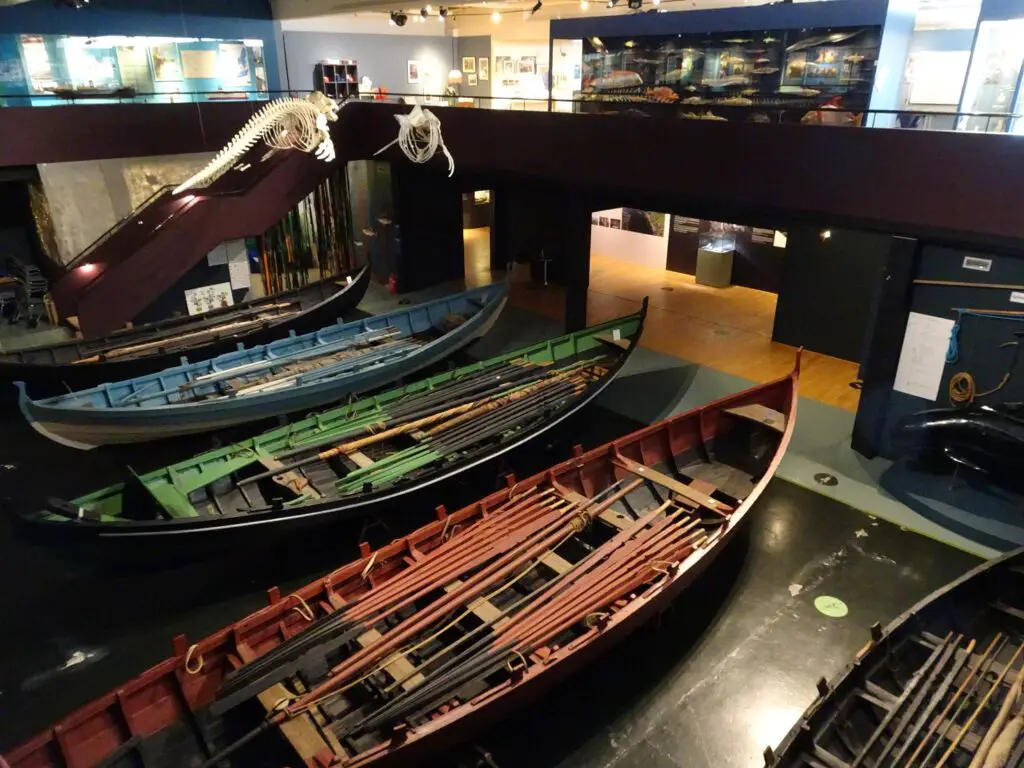
Apart from that, we particularly liked the nearby Hoyvíksgarður open-air museum, which is included in the entrance fee and features a traditional farmhouse with several outbuildings, allowing you a glance into Faroese life in the 19th and early 20th centuries.
The museum is in the suburb of Hoyvík. To get there, hop Line 1 of the free red city buses bound for Inni á Gøtu and get off at Brekkutún Stop. We paid an entrance fee of 80 DKK – you can check the current rates and opening times here.
Hoydalar and Svartafoss Waterfall
Instead of waiting for the bus back to the centre, I suggest you make your way back by foot through Hoydalar, the attractive open parkland south-west of Hoyvík. Here you can take a short detour to Svartafossur, a small but very pretty waterfall surrounded by blooming yellow monkeyflowers.
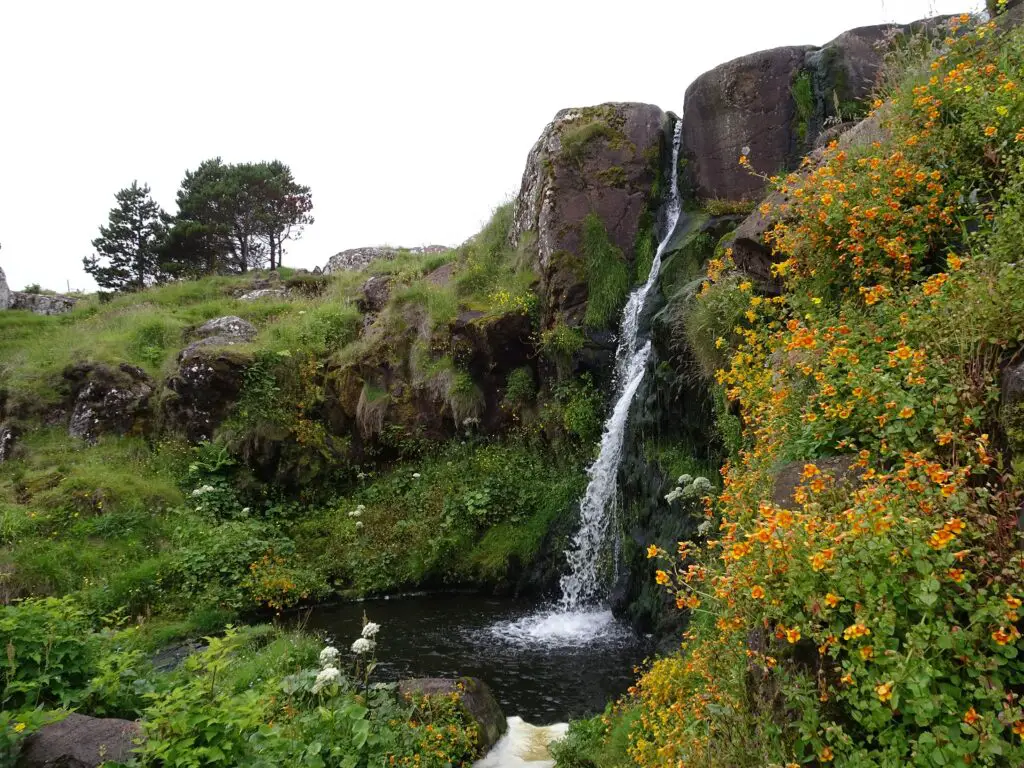
These attractive flowers can be found near brooks and rivers all over the islands and are locally called “Laura’s Flower” in honour of the woman who introduced them to the Faroes from Iceland. After checking out the waterfall, you can continue south towards the National Stadium of the Faroe Islands, before turning west for the Nordic House.
Nordic House
The Nordic House is a cultural venue holding art exhibitions, concerts and conferences. While we were there, there was a small kinetic art exhibition going on, but to be honest, we found the building’s beautiful organic architecture to be the much more interesting.
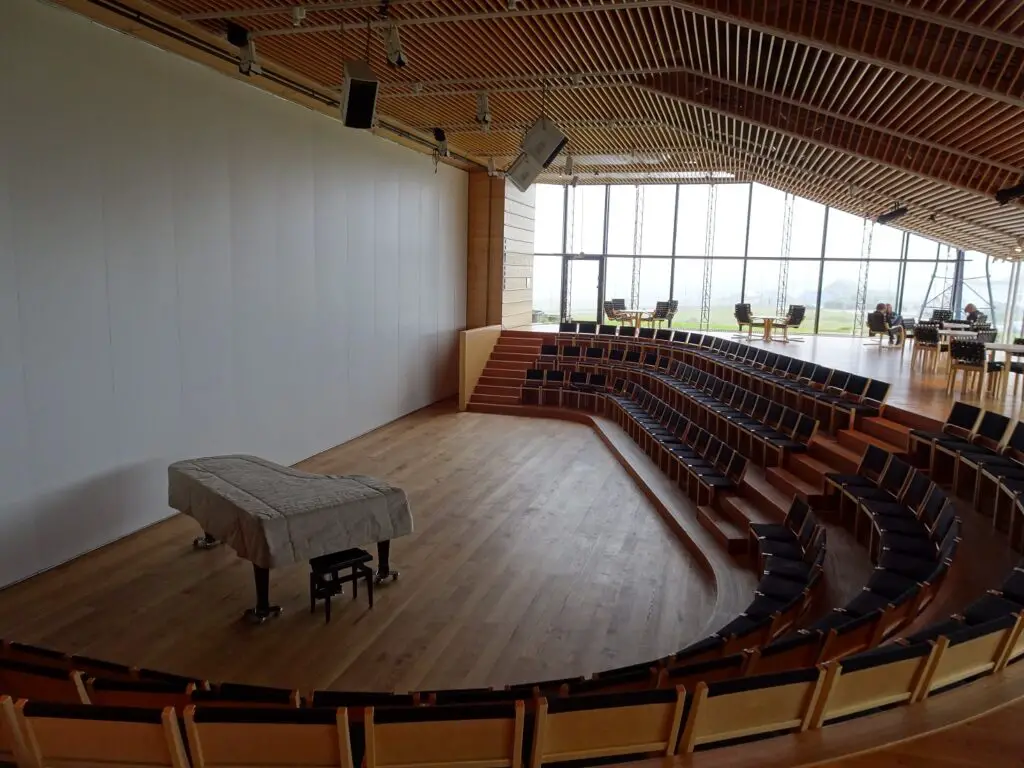
The unique design incorporates elements from many Northern European countries. Apart from the typically Faroese and Icelandic grass roof, its elements are constructed from Swedish wood, Danish glass and Norwegian stone, while the furniture is Finnish.
If you’re nearby, see if there’s an exhibition going on or drop in for a cup of coffee in its pleasant cafeteria, which is a good place to refuel for more explorations.
Listasavn Føroya (Art Museum)
Walk west arlong the ring road and then take Gundadalsvegur south to reach Listasavn Føroya, Tórshavn’s excellent Art Museum, which features both permanent exhibits of paintings, sculptures and installations by Faroese artists as well as shifting temporary exhibitions.
Interestingly, the artworks are not organized chronologically, but thematically, which gives you a fascinating glimpse into the artistic reception of several aspects of daily life on the Islands. Also featured are some bigger, sometimes immersive installations
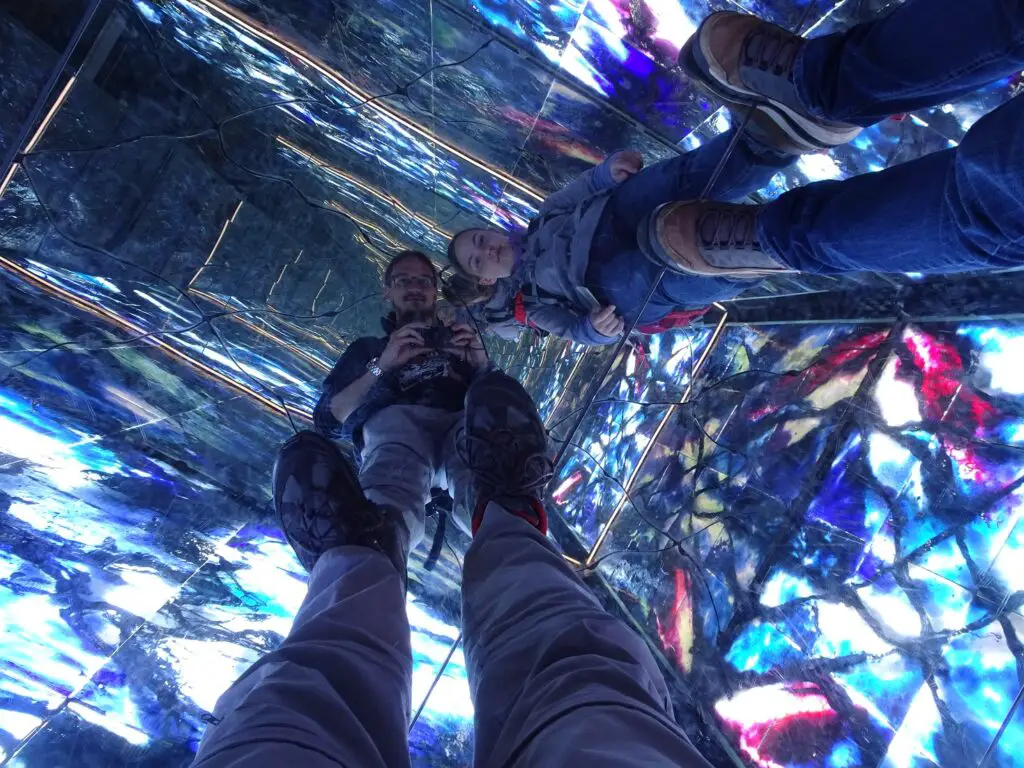
We especially liked the wonderfully trippy Cosmic Room (Kosmiska rúmið) by Trondur Patursson. We paid an entrance fee of 90 DKK – You can check the current rates and opening times here.
Viðarlundin (City Park)
The museum is located at the northern edge of the pretty City Park, which you can cross on your way to the town centre. On an archipelago otherwise mostly devoid of trees, woods on the Faroes are always man-made and therefore called Viðarlundin (Plantations).
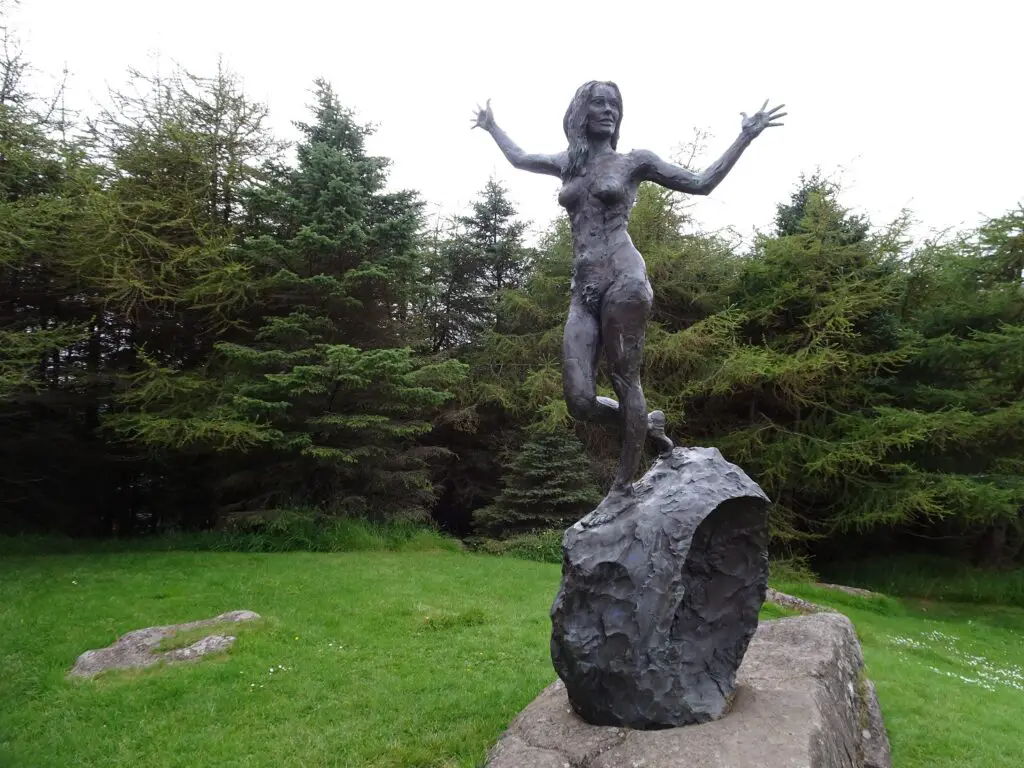
The one in Tórshavn is the biggest and in my opinion one of the nicest parks on the Islands. There are two pretty ponds, a picturesque brook and several monuments and statues, one of which is depicting a dancing elf-girl called Tarira – a character created by Faroese author William Heinesen.
Harbour Area and Tórshavn Cathedral
Follow the small brook south and walk through Tórshavn’s tiny modern centre until you reach the sea. The Harbour area still seems to be the beating heart of the city, as evinced by the many restaurants, bars and cafés around.
To your left is Dómkirkjan, which seems less like a Cathedral and more like a bigger village church – which is likely what it started out as, when it was built in 1788. It’s well worth to slip into its interior, which features a beautifully painted coffered ceiling imitating a starry night-sky. Also notable are the votive ships suspended from the rafters.

These detailed ship-models were donated to the church by thankful sailors, who survived severe storms. As you would expect in a place so closely connected to the sea, you can find them in many churches around the Islands. The small churchyard is also pretty cute. Just try not to walk into the adjacent yard like we unwittingly did – It’s the parson’s backyard:-).
Tinganes, the Historical Government Quarter
South of the Cathedral stretches Tinganes, Tórshavn’s most famous and arguably most beautiful quarter. The cute alleyways and lovely red-painted wooden buildings of the tiny government quarter certainly were our favourite part of Tórshavn.
The peninsula has been used for tings (parliamentary meetings) by the Vikings since the 9th century, and if you look closely, you will even find a sundial from the Viking Era etched into the rocks at the rocky southern tip of Tinganes.
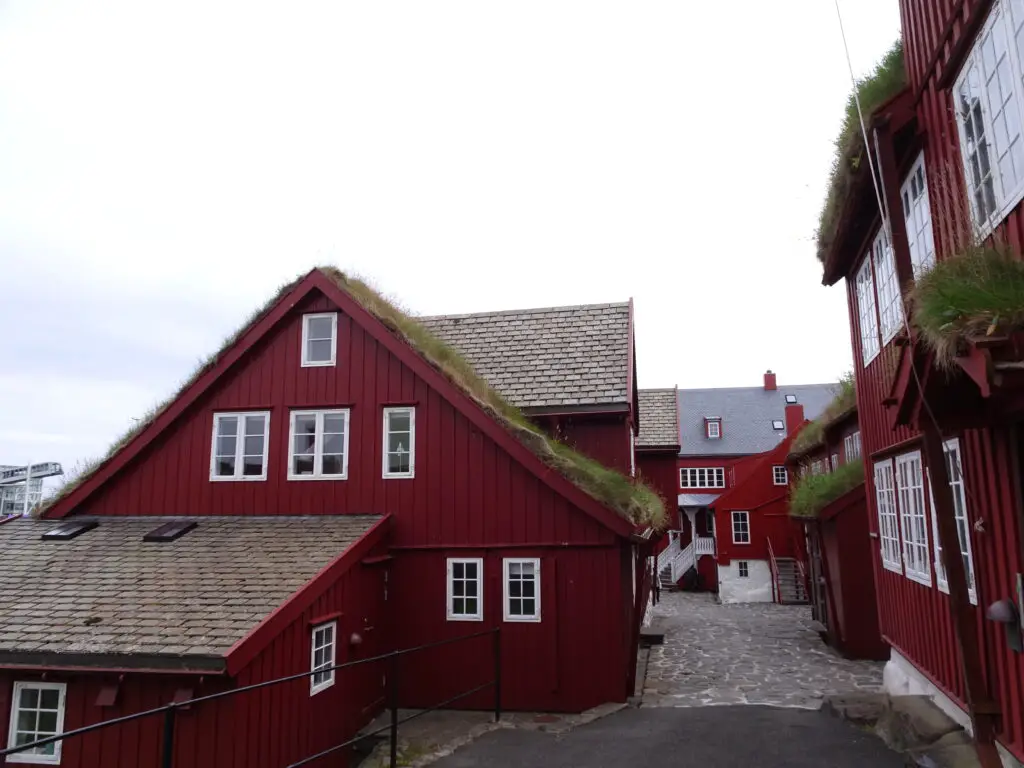
Most of the buildings on the peninsula date to the 16th and 17th centuries, and still contain government offices and ministries. It’s a lot of fun to wander around and explore the hidden alleyways of the oldest part of the city.
Beside government buildings, there are also quite a few private homes around. They are built in the traditional style with grass-decked roofs and a lot of them have cute, tiny gardens, but they are also still occupied, so make sure not to intrude on anyone’s privacy.
Skansin Fortress
If you leave Tinganes to the east and continue walking south, you’ll pass the city’s new harbour, where you’ll have arrived if you reached the islands by boat from Denmark or Iceland. Near the southeastern end of the harbour stands the historical Skansin Fortress, which dates to the late 16th century, when it was erected as a defense against frequent pirate attacks.
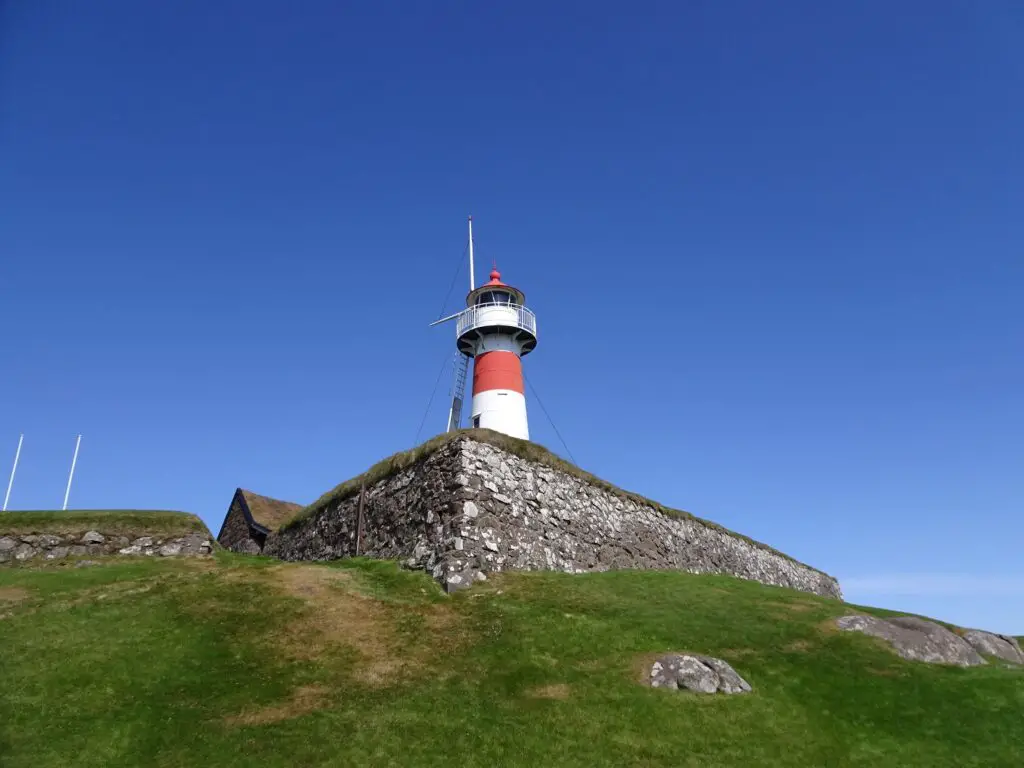
During WWII, it was used by British troops as a military base. While there aren’t many historic remains to be seen, apart from the walls, some cannons and a lighthouse, it offers a nice view over the harbour area and bay and in my opinion is worth the small detour.
Kongaminnið Monument and Viewpoint
If you’ve still got energy after your day of explorations, instead of retracing your steps, walk up Jónas Broncks Gøta to the Kongaminnið Monument, which was erected in commemoration of the first visit by a Danish King (Christan IX) to the Islands in 1874.
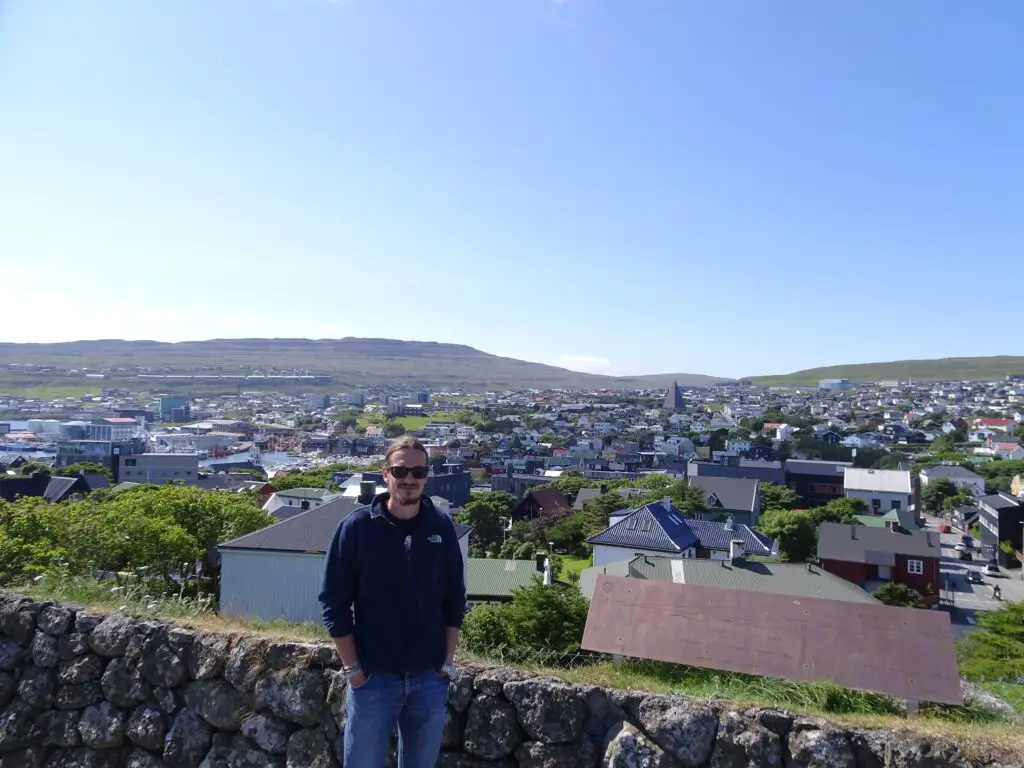
We loved the view of central Tórshavn and the harbour from up here. From the monument, you can walk south-west back into the town centre to grab some well-deserved dinner. There are plenty of proper restaurants around the old harbour, or if you have to pinch your pennies, there’s a great Fish’n’Chips Place on the small square behind the town hall.
Other Sights in Tòrshavn
If you have more than a day, there are plenty of other things to see in town. For instance, to the south-west of the city centre, there’s a tiny beach and a small aquarium with local sea creatures, while a few interesting galleries dot the inner city (we especially enjoyed Smiðjan í Lítluvík near the Western Harbour).
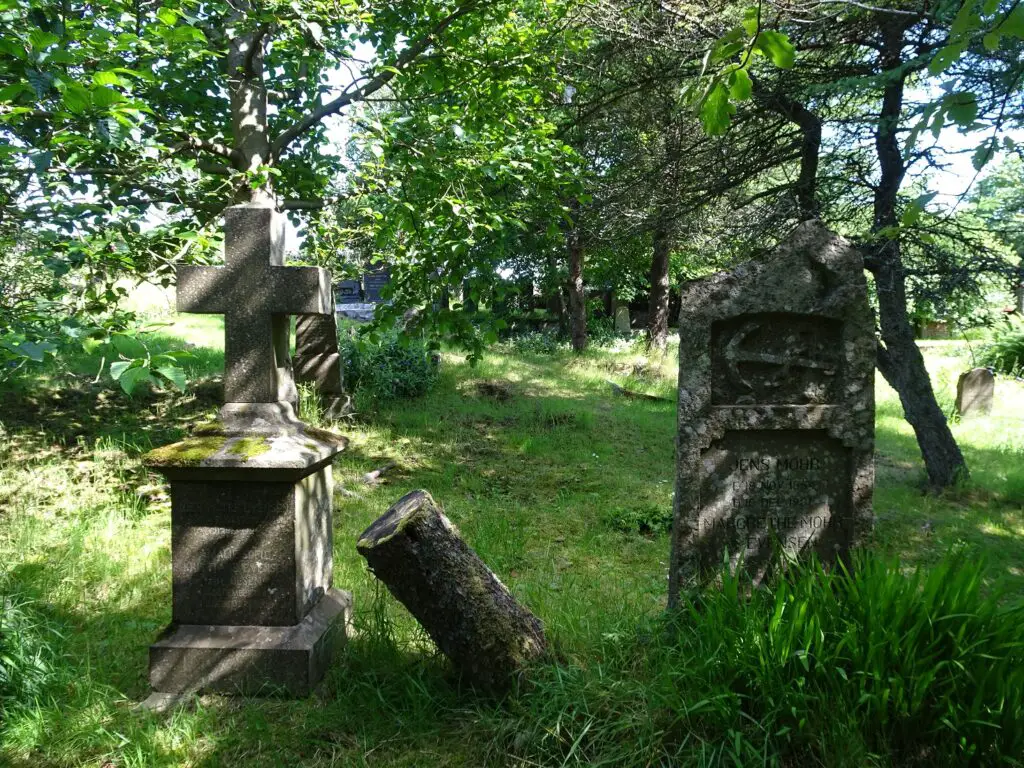
The old churchyard (Gamli Kirkjugarður) is also quite atmospheric, as are the streets and alleyways of the small pedestrian zone around the Western Harbour. If you’re around on the July 29th, check out the festivities for Saint Olaf’s Day.
Finally, Tórshavn is also a good base for day trips to nearby destinations. These include the small island of Nolsoy across the bay, historic Kirkjubøur in southern Streymoy as well as the picturesque village of Saksun and the impressive Vestmanna Birdcliffs in the northern part of the island.
Tórshavn Map
In this map of Tórshavn, you can find all of the sights mentioned above.
Where to Stay in Tórshavn
We were on a small budget and stayed at the student dormitories of the university, which are rented out to tourists during the summer break (62N Guesthouse Marknagil). It’s a bit out of the centre, but the free Red City Bus passes right in front of the dormitories and the views of the bay are fantastic.
Otherwise, there are plenty of mid-range options, like the well-rated Guesthouse at the Boat Harbour as well as a few luxury options. Among the latter, Hotel Hafnia has the best reputation. You can find more options in the map below.
Getting Around Tórshavn
We found getting around the city to be quite easy, as the centre is pretty small and can easily be navigated on foot. For sights that are a bit further away, you can also use the free red city buses. You can check the routes and timetables on this site.
See Also
Backpacking the Faroe Islands on a Budget – The Ultimate Guide
How to Reach the Faroe Islands by Ferry from Denmark and Iceland
